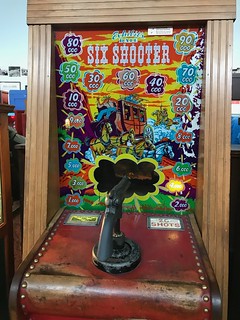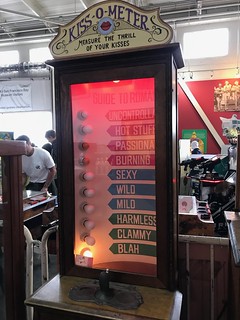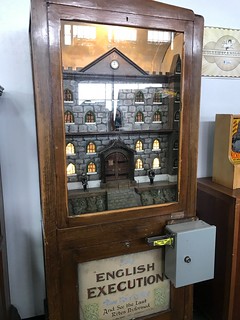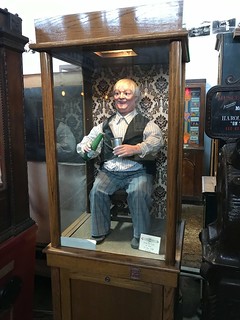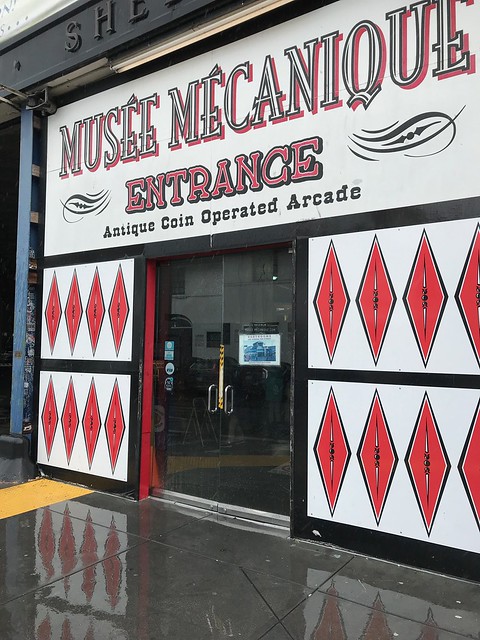
Musée Mécanique is a family run museum of coin operated amusements, many of which are antiques. It’s free to enter but you’ll have to bring or purchase quarters to try the machines. These include everything from arcade games to moving dioramas — I’ll get to what you can expect to find in the museum in a moment.
The first time I visited Musée Mécanique it was a somewhat forgotten back road attraction in the dusty, leaky basement of the Cliff House. There were tarps everywhere to protect the machines, which gave it the feeling of a collection in a dilapidated warehouse rather than a proper museum. Still, the place had character and made sense as much of the collection came from the defunct Playland at the Beach amusement park once located down the street.
When the Cliff House was closed for renovations in 2003, Musée Mécanique relocated to a larger and more tourist friendly location at Fisherman’s Wharf. It’s not terribly difficult to find; it’s roughly between the Fisherman’s Grotto and the historic ships at Pier 45.
Now, onto the machines themselves. Having visited Musée Mécanique a number of times over the years, I think they’re best described by category.

Arcade Games seem like the most obvious category of machines, and I found more than I previously remembered seeing during my visit yesterday.
They have everything from mechanical games like pinball or one where you guide a little bulldozer around, to games you might find at Chuck E. Cheese like a ball toss and air hockey, all the way to video arcade games including everything from a Pong knockoff to two player 90’s racing game Cruisin’ USA.
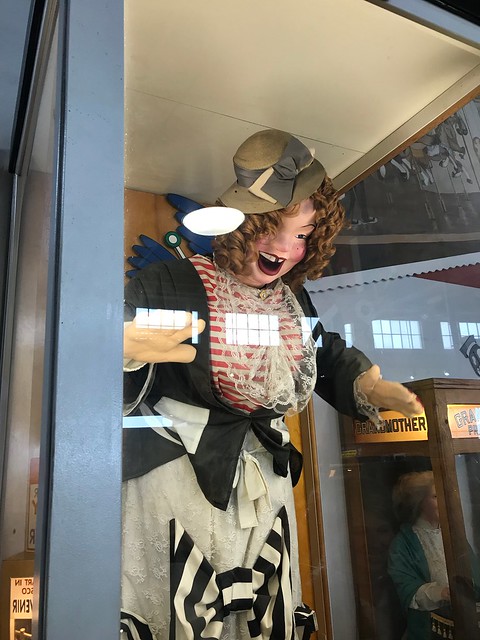
Creepy Machines are just what they sound like, and typically feature mechanically animated puppets laughing. The best known of these is the life-size Laffing Sal near the entrance, which lurches back and forth and she laughs.
Sal is only one of several of these throughout the place, but it’s by far the largest and best maintained.


Fortune Tellers typically feature the upper body of an old female mannequin who moves around a little, waves her hand over some tarot cards or a crystal ball, and then a fortune appears in a slot below.
It might seem racist and even sexist that the fortune teller figures always appear to be older female gypsies, but as we’ll soon see that’s just touching the tip of the iceberg here in terms of stereotypes.
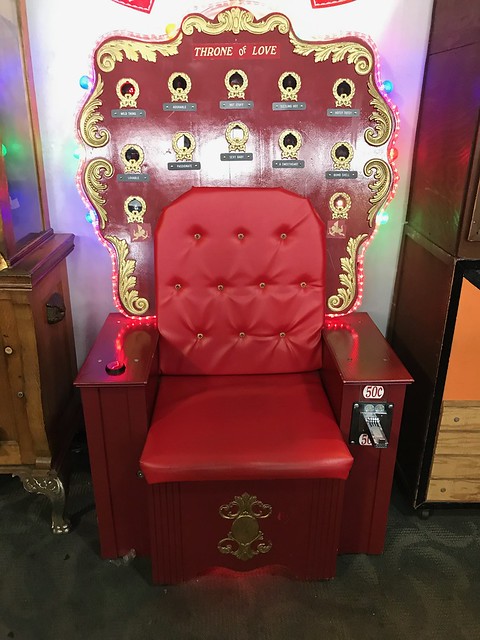
Love Machines claim to rate how attractive you are, how good of a kisser you are, etc. They’re all conceptually similar to the fortune tellers, but instead of just spitting out a random fortune there’s often some element of input involved, like squeezing a lever or putting your hand on a metal plate.
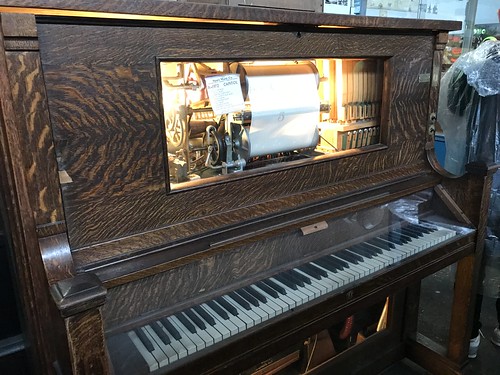
Music Machines play, well, music. From the player piano above to a Swiss mechanical music box, it becomes a cacophony of sound when they’re all going at once.
The most impressive of the bunch is a Wurlitzer “band box” near the entrance. It’s behind glass, probably for safety reasons. When fed enough quarters it springs into action, playing a variety of instruments in time with one another as a band would. It can play a handful of tunes, all of which fit the theme of an old carnival or amusement park.

Stereoscopic Photo Machines flip through a series of 3D photos in a special viewer. Many feature local themes like the 1906 earthquake and fire. Several claim to offer risque images though in practice the photos are very much G rated.
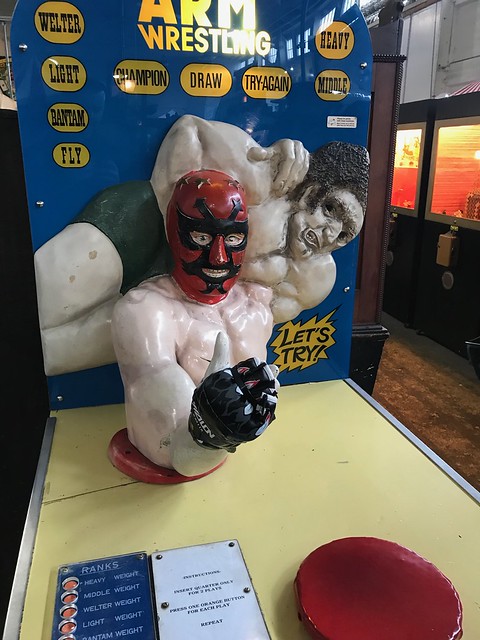
Feats of Strength test your strength. These range from machines where you have to pull two levers together, hit something, or in the photo above, arm wrestle a machine.
The arm wrestling machine is noteworthy because it features a large warning that the machine could break your arm. If you’re not careful at least you’ll have an entertaining story to tell your friends when they ask why you’re wearing a cast.
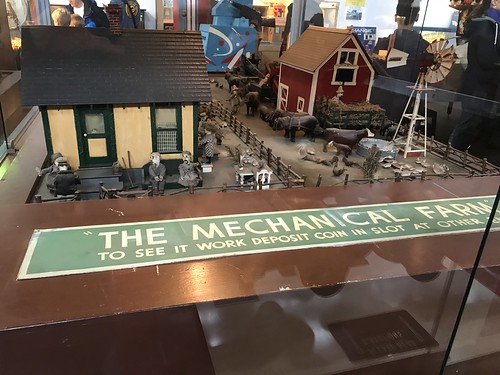
Dioramas typically show a scene of daily life in motion, or a little stage show with dancers. There’s often an element of music involved. These range significantly in size from a small cabinet to about the dimensions of a ping pong table.
These are often the least reliable category of machines, which includes their two subcategories below — prepare to lose a quarter or two.
Morbid Dioramas are the same thing but with a focus on the macabre. I’m not entirely sure why there’s so many of these, but then again if you want to watch something morbid or violent you have plenty more options these days.

Last but certainly not least, we have the category of Offensive Dioramas. It seems these amusements didn’t stand the test of time at all, raising many questions about what should be considered appropriate entertainment.
In the photos above we have a diorama of an opium den, complete with stereotypical Chinese people depicted as opioid addicts who do little than squirm back and forth. Susie the Can-can dancer seems to be a stereotypical depiction of an African woman with enormous lips, but for some reason is dressed like a Polynesian dancer. What this has to do with Can-can dancing I’m not really sure. And then there’s Dan, the alcoholic puppet you can watch take a drink, because once again addiction is something we’re apparently meant to laugh about.
I’m sure none of these were created with the intention to offend, but they’re regrettable enough in retrospect it’s easy to see why they’re in a museum instead of at, say, a Six Flags.
My recommendation: I think anyone who wants to see antique amusements, old arcade games, etc. should consider stopping by. It’s easily the most unique attraction in the entire Fisherman’s Wharf neighborhood.

